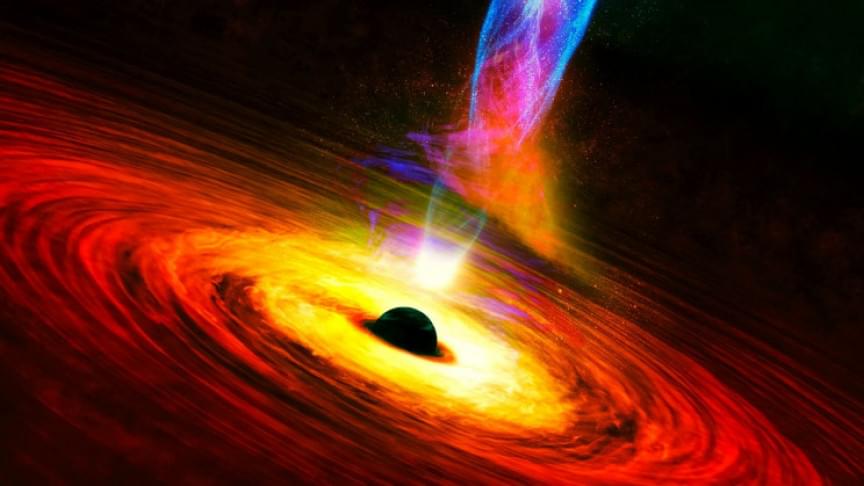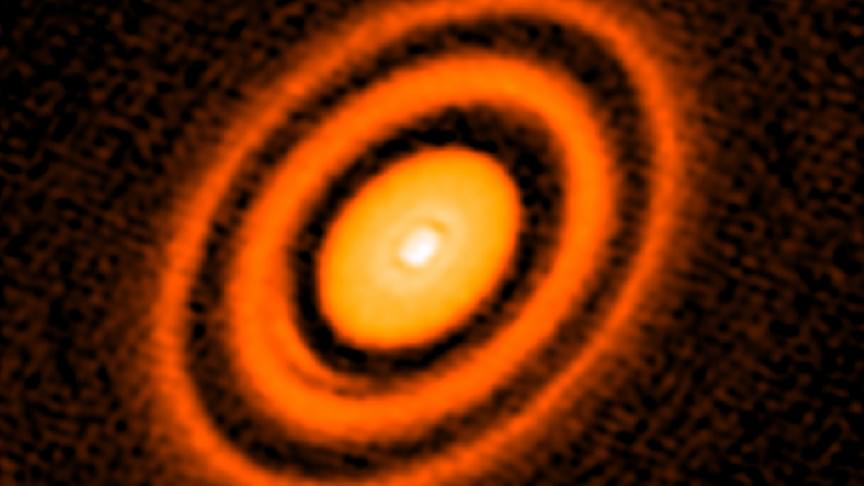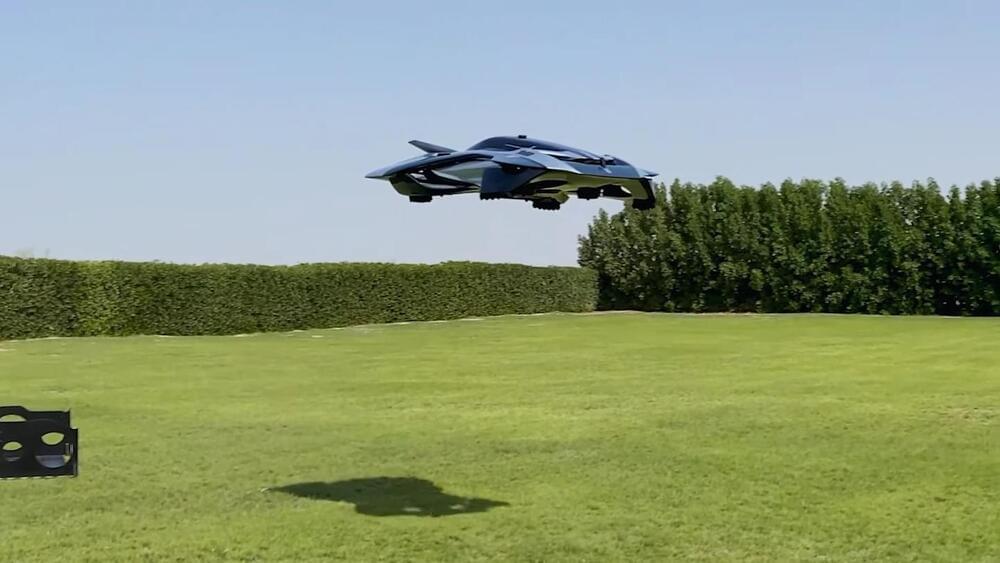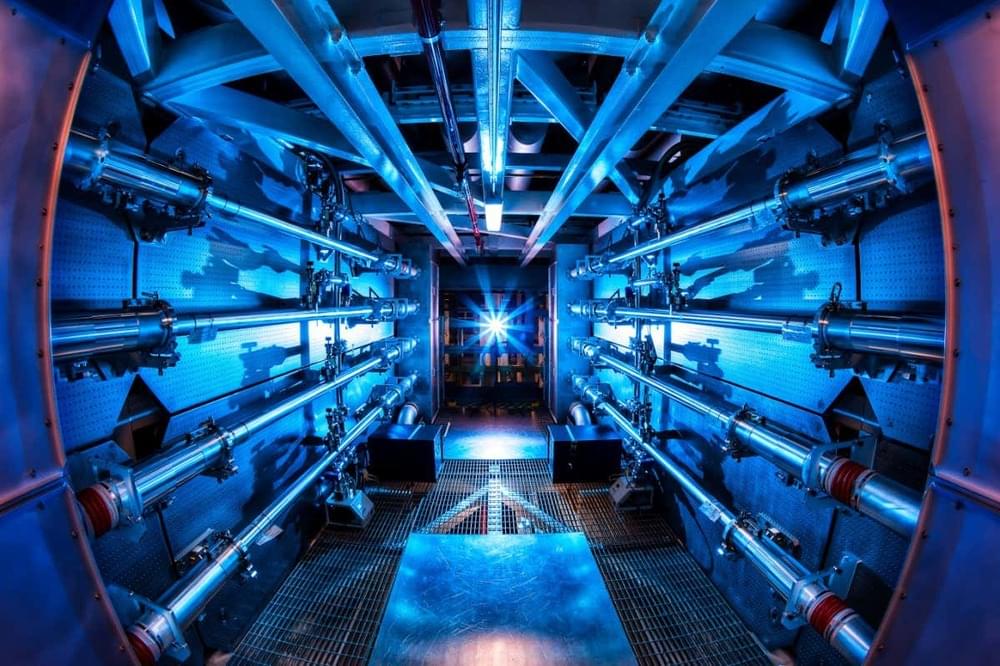Page 2737
Jan 14, 2022
Black Hole at Heart of Milky Way Keeps Flashing and No One Knows Why
Posted by Gemechu Taye in category: cosmology
Sagittarius A* keeps flashing randomly on a daily basis. Astronomers mapped 15 years of radiation bursts to try to figure out why.
The supermassive black hole at the center of the Milky Way, Sagittarius A*, keeps releasing random bursts of radiation on a daily basis and no one can figure out what is causing it. Now, an international team of researchers compiled 15 years of data to try and solve the mystery.
The team, led by a postgraduate student named Alexis Andrés, mapped a decade and a half’s worth of gamma-ray bursts from Sagittarius A* using NASA’s Neil Gehrels Swift Observatory.
Continue reading “Black Hole at Heart of Milky Way Keeps Flashing and No One Knows Why” »
Jan 14, 2022
The Early Sun’s Rings Stopped Our Planet from Becoming a ‘Super-Earth’
Posted by Gemechu Taye in categories: physics, space
The sun was once surrounded by rings of gas and dust similar to those orbiting Saturn, a new study published in the journal Nature Astronomy reveals.
These rings played a vital role in the formation of our solar system and in the size and habitability of Earth.
The early sun’s dust and gas rings may have stopped our planet from becoming a “super-Earth,” according to the Rice University astrophysicists behind the new paper. “In the solar system, something happened to prevent the Earth from growing to become a much larger type of terrestrial planet called a super-Earth,” Rice University astrophysicist André Izidoro, said in a press statement.
Jan 14, 2022
Lightyears 101: Are We Watching the Stars In Real Time?
Posted by Gemechu Taye in categories: asteroid/comet impacts, existential risks

In our solar system, Saturn is the farthest planet from Earth that can be seen with the naked eye. And if it is destroyed by an asteroid while you are watching it (with or without a telescope), the ringed planet would still be visible to you for around 80 minutes, on average, even after it’s in bits and pieces. This happens because the average distance between Saturn and Earth is 0.00015 light-years, which means that the light from Saturn takes approximately 80 minutes to rea… See more.
A lightyear is a unit that denotes the distance of objects from Earth in space. But how did it come to be and how does it help us in space travels?
Continue reading “Lightyears 101: Are We Watching the Stars In Real Time?” »
Jan 14, 2022
BlueNoroff hackers steal crypto using fake MetaMask extension
Posted by Genevieve Klien in categories: cryptocurrencies, finance
The North Korean threat actor group known as ‘BlueNoroff’ has been spotted targeting cryptocurrency startups with malicious documents and fake MetaMask browser extensions.
The motive of this group is purely financial, but its sophistication in carrying out objectives has previously led researchers to conclude that this is a sub-group of the North Korean Lazarus gang.
Although BlueNoroff has been active for several years, its structure and operation have been shrouded by mystery.
Jan 14, 2022
Observability: How AI will enhance the world of monitoring and management
Posted by Shubham Ghosh Roy in category: robotics/AI
The more the enterprise transitions from a mere digital organization to a fully intelligent one, the more data executives will come to realize that traditional monitoring and management of complex systems and processes is not enough.
What’s needed is a new, more expansive form of oversight – which lately has come to be known as “data observability.”
The distinction between observability and monitoring is subtle but significant. As VentureBeat writer John Paul Titlow explained in a recent piece, monitoring allows technicians to view past and current data environments according to predefined metrics or logs. Observability, on the other hand, provides insight into why systems are changing over time, and may detect conditions that have not previously been considered. In short, monitoring tells you what is happening, while observability tells you why it’s happening.
Jan 14, 2022
Dubai becomes test zone for ‘Star Wars’-like flying car that can reach 220kph
Posted by Shane Hinshaw in category: transportation
Jan 14, 2022
Long-lasting radiation shields may make super-Earths friendly for life
Posted by Genevieve Klien in category: space
Life on Earth is made possible by our planet’s magnetosphere – an invisible radiation shield that protects the surface – now it turns out that super-Earths could have magnetospheres too.
Jan 14, 2022
Smart guns finally arriving in U.S., seeking to shake up firearms market
Posted by Genevieve Klien in categories: government, law enforcement
Personalized smart guns, which can be fired only by verified users, may finally become available to U.S. consumers after two decades of questions about reliability and concerns they will usher in a new wave of government regulation.
Four-year-old LodeStar Works on Friday unveiled its 9mm smart handgun for shareholders and investors in Boise, Idaho. And a Kansas company, SmartGunz LLC, says law enforcement agents are beta testing its product, a similar but simpler model.
Both companies hope to have a product commercially available this year.
Jan 14, 2022
Northwest Arkansas is offering $10K in Bitcoin and bike to relocate there
Posted by Genevieve Klien in categories: bitcoin, transportation
How about this as an incentive to relocate: $10K in crypto and a bike.
Northwest Arkansas hopes to lure remote tech workers and entrepreneurs to the region by offering them $10,000 worth of Bitcoin (BTC-USD) and a bicycle.
“Northwest Arkansas is one of the fastest-growing regions in the country, and we’re now seeing more explosive growth in our tech sector,” said Nelson Peacock, president and CEO of the Northwest Arkansas Council.








